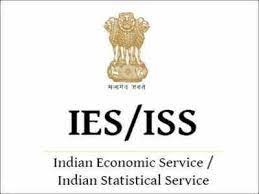UPSC IES/ ISS Exam 2022 Syllabus : Union Public Service Commission
Organisation : Union Public Service Commission UPSC
Exam Name : UPSC IES/ ISS Exam 2022
Announcement : UPSC Combined IES/ ISS Exam Syllabus
Website : https://upsc.gov.in/
What is UPSC IES/ ISS Exam?
The Indian Economic Service along with Indian Statistical Service is the administrative inter-ministerial civil service under Group A of the Central Civil Services of the executive branch of the Government of India. To apply for Indian Statistical Services (ISS) exam candidates must have possessed a Bachelor’s Degree with Statistics/Mathematical Statistics/Applied Statistics as one of the subjects from a recognized University or, have passed a Master’s degree in Statistics/Mathematical Statistics/Applied Statistics.
Related / Similar Syllabus : UPSC Engineering Services Exam Syllabus 2023

Syllabus For UPSC IES/ ISS Exam
The Syllabus For UPSC IES/ ISS Exam are given below,
1. General English (Common To Both IES/ISS)
Candidates will be required to write an essay in English. Other questions will be designed to test their understanding of English and workman like use of words. Passages will usually be set for summary or precis.
2. General Studies (Common To Both IES/ISS)
General knowledge including knowledge of current events and of such matters of everyday observation and experience in their scientific aspects as may be expected of an educated person who has not made a special study of any scientific subject. The paper will also include questions on Indian Polity including the political system and the Constitution of India, History of India and Geography of a nature which a candidate should be able to answer without special study.
3. General Economics – I (For IES only)
PART A :
1. Theory of Consumer’s Demand
Cardinal utility Analysis: Marginal utility and demand, Consumer’s surplus, Indifference curve Analysis and utility function, Price, income and substitution effects, Slutsky theorem and derivation of demand curve, Revealed preference theory. Duality and indirect utility function and expenditure function, Choice under risk and uncertainty.
Simple games of complete information, Concept of Nash equilibrium.
2. Theory of Production:
Factors of production and production function.
Forms of Production Functions: Cobb Douglas, CES and Fixed coefficient type, Translog production function.
Laws of return, Returns to scale and Return to factors of production. Duality and cost function, Measures of productive efficiency of firms, technical and allocative efficiency.
Partial Equilibrium versus General Equilibrium approach. Equilibrium of the firm and industry.
3. Theory of Value:
Pricing under different market structures, public sector pricing, marginal cost pricing, peak load pricing, cross-subsidy free pricing and average cost pricing. Marshallian and Walrasian stability analysis. Pricing with incomplete information and moral hazard problems.
4. Theory of Distribution:
Neo classical distribution theories; Marginal productivity theory of determination of factor prices, Factor shares and adding up problems. Euler’s theorem, Pricing of factors under imperfect competition, monopoly and bilateral monopoly. Macro- distribution theories of Ricardo, Marx, Kaldor, Kalecki.
5. Welfare Economics:
Inter-personal comparison and aggression problem, Public goods and externalities, Divergence between social and private welfare, compensation principle. Pareto optimality. Social choice and other recent schools, including Coase and Sen.
PART B : Quantitative Methods in Economics
1.Mathematical Methods in Economics:
Differentiation and Integration and their application in economics. Optimisation techniques, Sets, Matrices and their application in economics.
Linear algebra and Linear programming in economics and Input-output model of Leontief.
2. Statistical and Econometric Methods:
Measures of central tendency and dispersions, Correlation and Regression. Time series. Index numbers. Sampling of curves based on various linear and non-linear function. Least square methods and other multivariate analysis (only concepts and interpretation of results). Analysis of Variance, Factor analysis, Principle component analysis, Discriminant analysis. Income distribution: Pareto law of Distribution, lognormal distribution, measurement of income inequality. Lorenz curve and Gini coefficient. Univariate and multivariate regression analysis.
Problems and remedies of Hetroscedasticity, Autocorrelation and Multicollnearity.

Indian Economics (For IES only)
1. History of development and planning
Alternative development strategies—goal of self-reliance based on import substitution and protection, the post-1991 globalisation strategies based on stabilisation and structural adjustment packages: fiscal reforms, financial sector reforms and trade reforms.
2. Ederal Finance:
Constitutional provisions relating to fiscal and financial powers of the states, Finance Commissions and their formulae for sharing taxes, Financial aspect of Sarkaria Commission Report, Financial aspects of 73rd and 74th Constitutional Amendments.
Syllabus & Notification : http://www.syllabus.gen.in/uploads/pdf2022/2617-note.pdf
3. Money and Banking:
Financial sector reforms, Organisation of India’s money market, changing roles of the Reserve Bank of India, commercial banks, development finance institutions, foreign banks and non-banking financial institutions, Indian capital market and SEBI, Development in Global Financial Market and its relationship with Indian Financial Sector.
Commodity Market in India-Spot and Futures Market, Role of FMC.